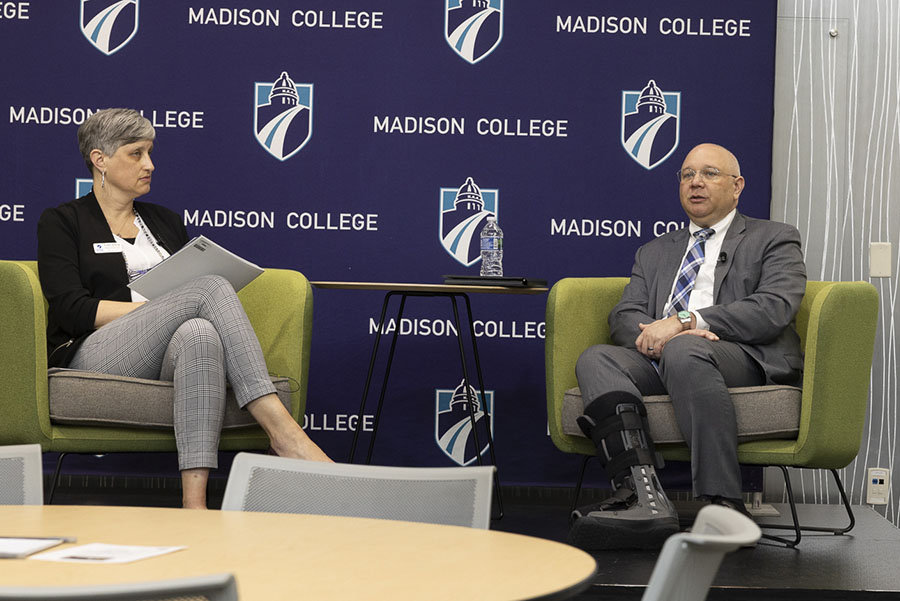Recent media coverage has been critical of Madison College’s declining enrollment figures. The numbers haven’t matched the school’s own projections and will likely result in budget cuts. This news comes despite the new buildings being primed for use. Students and faculty may be concerned by this news and the expected cuts to come.
The decline of enrollment figures shouldn’t be too alarming in the long-term, college officials feel.
Provost Terry Webb is privy to media’s coverage but emphatically defends the referendum and sees the college’s future as bright. The coverage is “a little misleading,” according to Webb, who feels that “it didn’t really tell the entire story of the buildings and budget and the journey we have been on since the referendum.”
While it is true that this semester’s full-time classroom enrollment numbers (21,776) are down, they’re arguably a blip in what have been very impressive figures overall. In fact, the approximate two percent dip comes after all-time high statistics achieved beforehand, according to Webb. He added that this semester’s results still show the third highest enrollment total in the school’s history.
Not everyone is as positive as Webb.
State Rep. Steve Nass (R-Whitewater) is an outspoken critic of the school’s construction project. In his email to Madison College President Bettsey Barhorst, he sharply criticized college officials for enrollment figures being down and insisted there was a lack of accountability.
“I find it humorous that you blame, in part, the state property tax freeze enacted in the 2011-2013 Biennial Budget for Madison College’s inability to properly finance new operating costs associated with the immense (referendum).”
College officials feel his view ignores how detrimental the tax levy freeze was to the budget.
According to Webb, legislation cut 30 percent of the college’s expected budget. With operating costs on the rise and available funds down, it’s unavoidable that certain reductions need to be made. The referendum went through at the time, in part, because of the low interest rates – approximately one percent – that the school was able to secure. This will ensure that future budget decisions are made with a relatively consistent cost.
A promise from the referendum that was kept is seen in the amount of jobs created by the construction and the positive effect that had on the local economy. Webb said nearly half the Findorff-employed construction workers were trained at Madison College.
While college officials need to make cuts to operating expenses, Webb dispelled some rumored cuts involving certificate programs and extra curricular activities. If the school board needs to cut any programs, Webb maintained that the college is “obligated to make sure the students, that want to, can finish.” He also added that sports and other student activities are unrelated to the possible cuts because student fees fund them.
There are reasons to believe there will be an increase in funding and enrollment soon. The U.S. Department of Education expects to see a 15 percent increase, in the coming years, according to their “Projection of Education Statistics to 2021.” Community colleges are also the cornerstone of President Obama’s workforce strategy and it is unlikely that funding will stay down. These factors coupled with modern facilities having a real college feel bode well for Madison College’s immediate future.
“One of our guiding principals in this whole affair has been make decisions with long-term perspective and that’s what we are going to continue to do,” said Webb. This college has been here for 100 years, going to be for another 100 years and its up to us to make the best decisions we can for the folks that come after us. That’s really what drives our decision making,” he concluded.


























